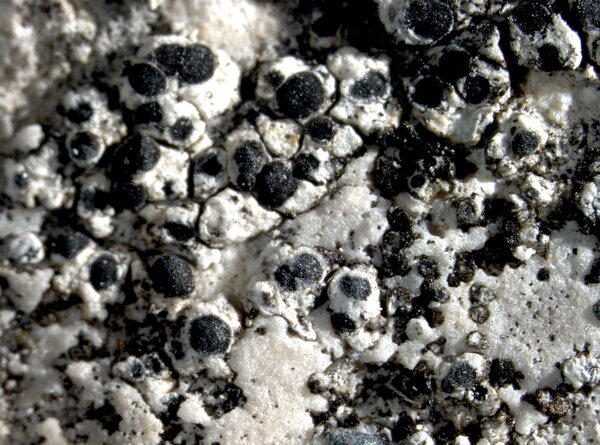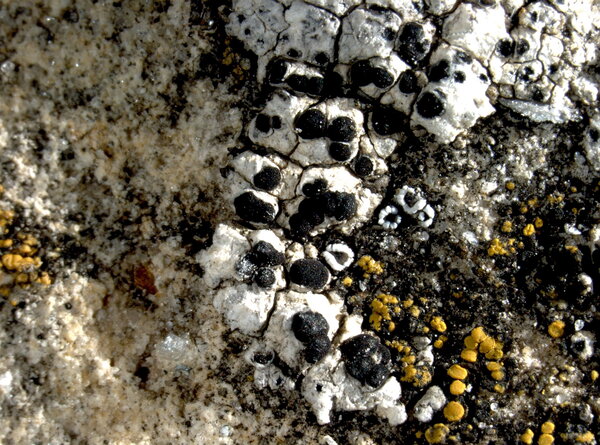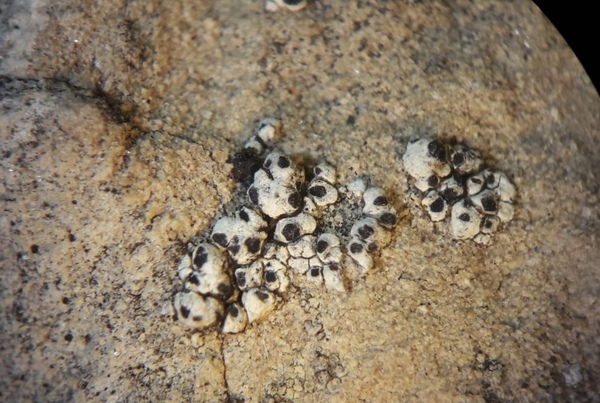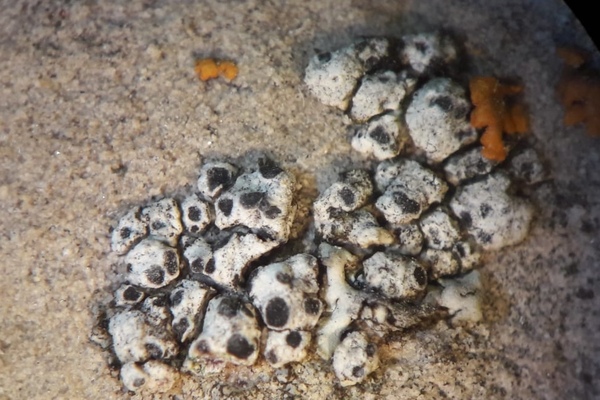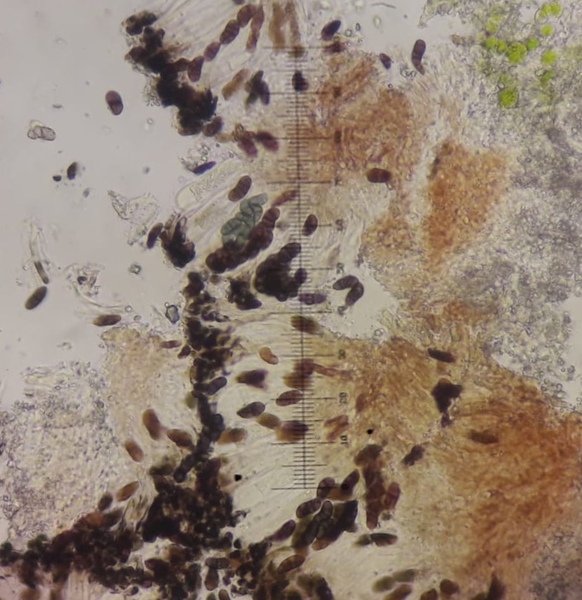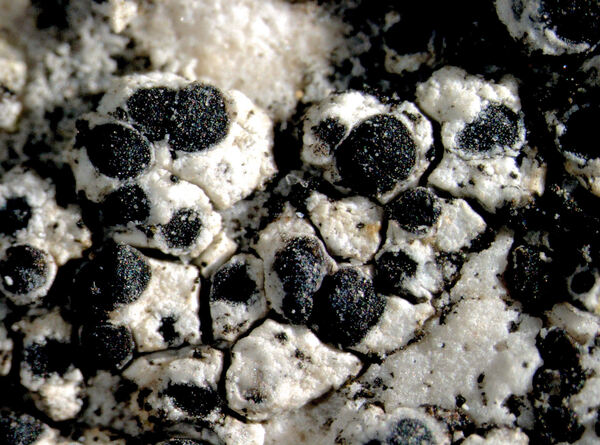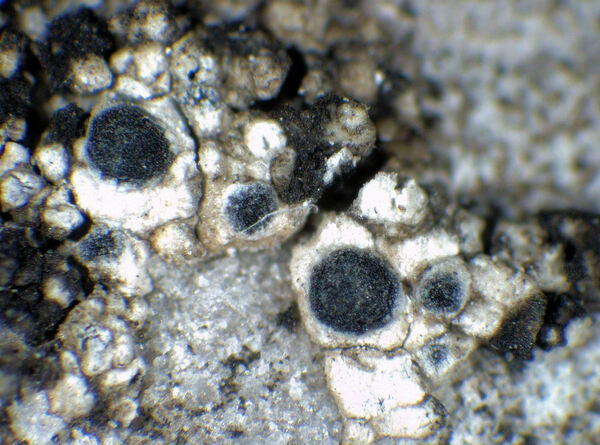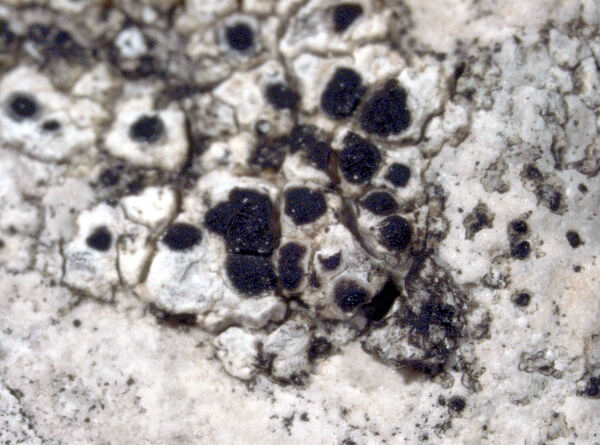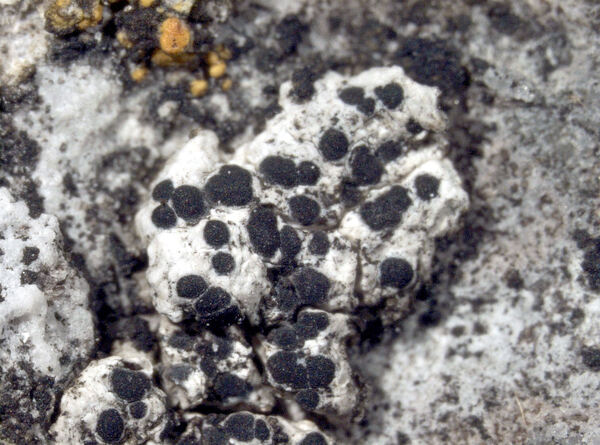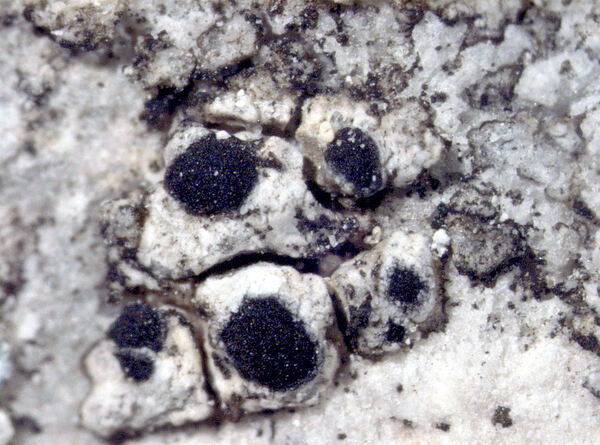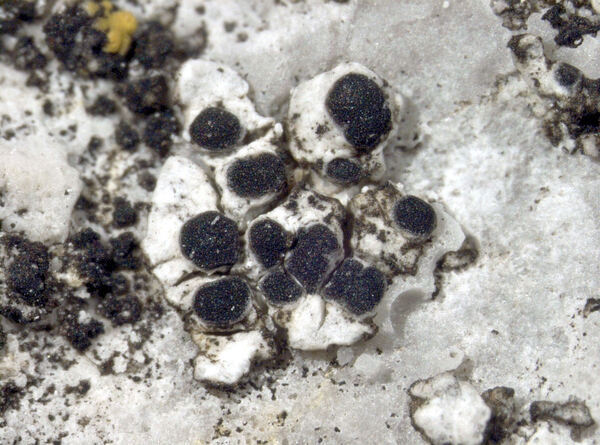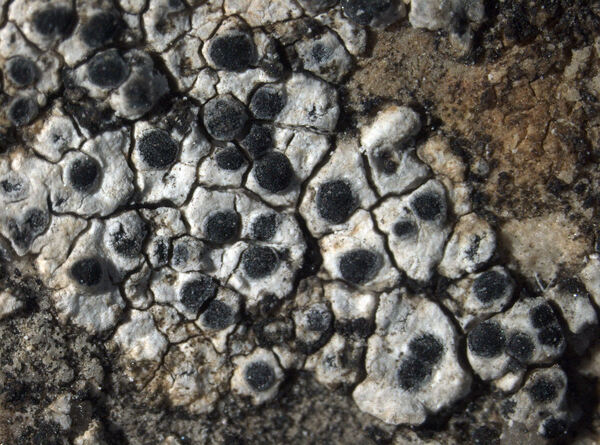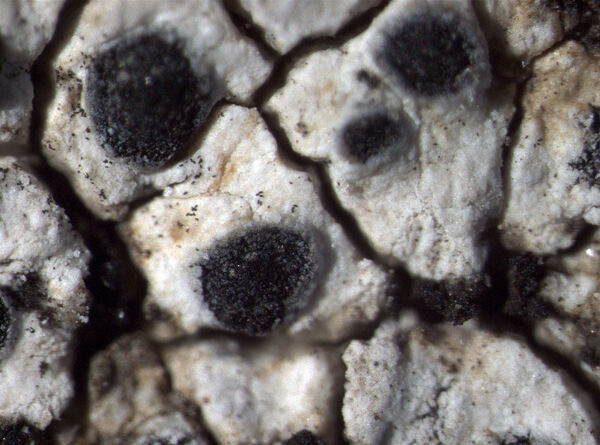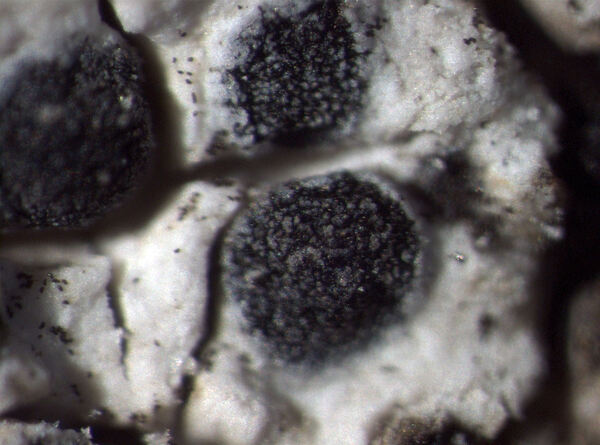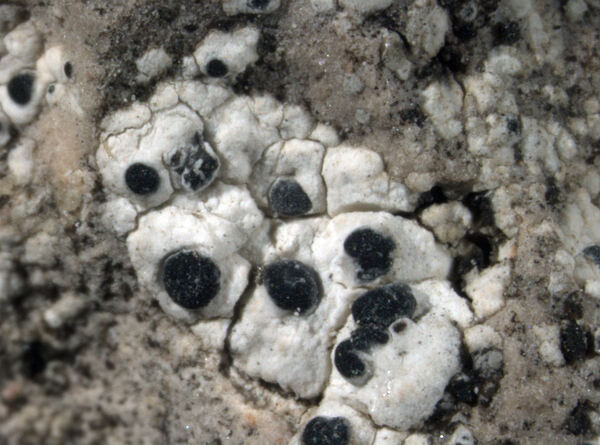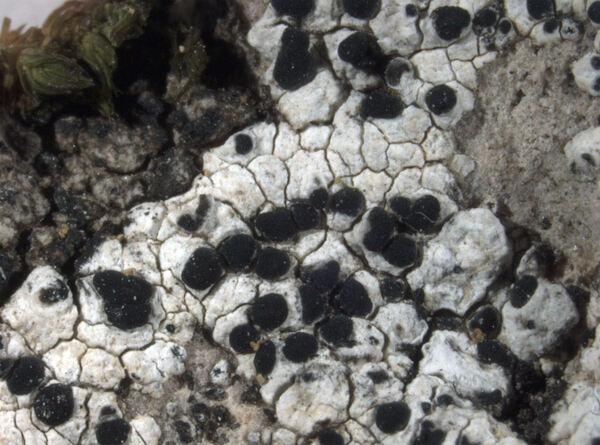Diplotomma dispersum (Kremp.) Arnold
Flora, 55: 195, 1872. Basionym: Diplotomma alboatrum var. dispersum Kremp. - Denkschr. kgl. bayer. bot. Ges., Abt. 2, 4: 209, 1861
Synonyms: Buellia subdispersa Mig.; Diplotomma subdispersum (Mig.) Etayo & Breuss
Description: Thallus crustose, episubstratic, rather thick, chalky white, areolate, forming small (1-4 mm wide) patches, the areoles irregular in outline, flat to slightly convex, dispersed to contiguous and separated by deep cracks. Medulla white, I+ blue. Apothecia lecideine, black, 0.3-0.4(-0.6) mm across, subimmersed to subsessile, with a soon convex, usually epruinose disc, and a soon excluded proper margin. Proper exciple brown in outer part, paler within, c. 30 μm wide; epithecium brown; hymenium colourless, K/I+ blue; paraphyses simple, slightly capitate; hypothecium reddish brown. Asci 8-spored, clavate to cylindrical-clavate, the apical dome K/I+ dark blue with a pale, conical-pointed apical cushion (axial mass), the wall I-, but the thin outer gel I+ blue, approaching the Bacidia-type. Ascospores (2-)3-septate, brown, ellipsoid, slightly curved and bean-shaped, 12-19(-22) x 5-8 μm, with a minutely granulose ornamentation over the whole surface. Photobiont chlorococcoid. Spot tests: K-, C-, KC-, P-, UV-. Chemistry: without lichen substances.
Growth form: Crustose
Substrata: rocks
Photobiont: green algae other than Trentepohlia
Reproductive strategy: mainly sexual
paras crustose lichens when young (facultatively)
Commonnes-rarity: (info)
Alpine belt: very rare
Subalpine belt: rare
Montane belt: absent
Dry submediterranean belt: absent
Humid submediterranean belt: absent
Padanian area: absent
pH of the substrata:
1 2 3 4 5
Solar irradiation:
1 2 3 4 5
Aridity:
1 2 3 4 5
Eutrophication:
1 2 3 4 5
Poleotolerance:
0 1 2 3
Altitudinal distribution:
1 2 3 4 5 6
Rarity
absent
extremely rare
very rare
rare
rather rare
rather common
common
very common
extremely common
Loading data...
Occurrence data
Predictive map
Growth form: Crustose
Substrata: rocks
Photobiont: green algae other than Trentepohlia
Reproductive strategy: mainly sexual
paras crustose lichens when young (facultatively)
Commonnes-rarity: (info)
Alpine belt: very rare
Subalpine belt: rare
Montane belt: absent
Dry submediterranean belt: absent
Humid submediterranean belt: absent
Padanian area: absent
pH of the substrata:
| 1 | 2 | 3 | 4 | 5 |
Solar irradiation:
| 1 | 2 | 3 | 4 | 5 |
Aridity:
| 1 | 2 | 3 | 4 | 5 |
Eutrophication:
| 1 | 2 | 3 | 4 | 5 |
Poleotolerance:
| 0 | 1 | 2 | 3 |
Altitudinal distribution:
| 1 | 2 | 3 | 4 | 5 | 6 |
Rarity
absent
extremely rare
very rare
rare
rather rare
rather common
common
very common
extremely common
Loading data...
Occurrence data
Predictive map


